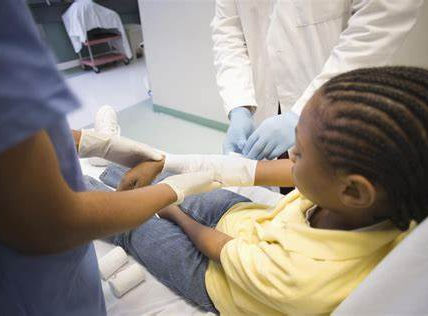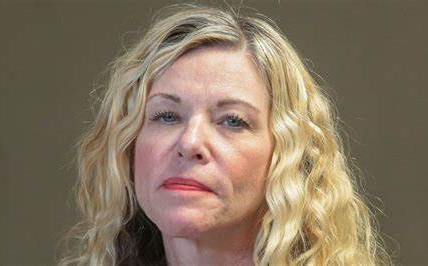The “Southport killer” refers to Axel Muganwa Rudakubana, the teenager who murdered three young girls and wounded ten others during a Taylor Swift–themed dance class in Southport on 29 July 2024, and who was later sentenced to life imprisonment with a minimum term of 52 years in January 2025 after pleading guilty to murder, attempted murder, and related offences, including producing ricin and possessing a terrorist training document. The case triggered a nationwide reckoning over violent extremism without clear ideology, sparked riots fueled by misinformation, and led to a public inquiry now hearing harrowing testimony from survivors and families in 2025.
What happened on 29 July 2024?
The attack occurred during a Taylor Swift–themed dance and yoga workshop for children at a local studio in Southport, just before noon, and involved the assailant moving methodically through the crowded class, stabbing girls as they made friendship bracelets and sang along to songs, according to courtroom presentations and reporting from the sentencing.
Emergency services declared a major incident, and two adults, the instructor Leanne Lucas and a community member, Jonathan Hayes were among those critically wounded as they tried to protect children, underscoring acts of bravery later highlighted in sentencing and media accounts. Two girls died at the scene and a third died the next day; a total of ten others were wounded, including eight children and two adults, consistent with the later charges of ten attempted murders.
Who is the attacker?
The suspect was named publicly in early August 2024 after a judge lifted reporting restrictions: Axel Muganwa Rudakubana, then 17, a British national born in Wales to Rwandan parents, details reported amid a swirl of misinformation about his identity that fueled unrest and racist tropes online and on the streets.
Reports following the guilty plea indicated that he had a documented history of violent interests and had been referred multiple times to Prevent (the UK’s counter-extremism program) between 2019 and 2021, but he was not accepted because assessors did not identify terrorist ideology at the time, something that has since fed debate about how to handle “ideology-blind” mass violence.
Prosecutors, in court narratives, argued the attack was “meticulously planned” and that, despite the possession of a jihadist training PDF, no ideology-based motive was proven for the stabbings, leading to a framing of the crime as extreme violence for its own sake rather than classic terrorism under current definitions.
The victims
The three girls who died were identified as Bebe King, 6; Elsie Dot Stancombe, 7; and Alice da Silva Aguiar, 9, whose families and community became central to memorials and the courtroom statements that followed the guilty plea and sentencing, a tragedy repeatedly noted by press and prosecution.
In addition to the three killings, eight other children and two adults suffered serious injuries, and accounts from the sentencing hearing described scenes of chaos and acts of protection by adults and children alike, including details shown via CCTV and dashcam footage.The victims’ families later told the court and the media about the devastating and enduring impact, and the ongoing public inquiry has heard heart-wrenching testimony including a girl stabbed six times while shielding her sister, and a father fainting upon seeing his wounded daughter.
Arrest, charges, and plea
Merseyside Police arrested Rudakubana at the scene and initially charged him with three counts of murder, ten of attempted murder, and possession of a bladed article, later adding counts for producing ricin and possessing a terrorist document under relevant UK statutes.
After entering not guilty pleas in late 2024, he unexpectedly changed to guilty on 20 January 2025, the scheduled first day of trial, pleading to all 16 charges, an outcome that spared families the ordeal of a full trial but left questions about motive and missed interventions. Prosecutors emphasized his sustained interest in death and violence and planning, noting the ricin charge and the possession of a jihadist manual, but maintained that no ideologically driven terror motive could be established for the stabbings themselves.
Sentencing: life with a 52-year minimum
On 23 January 2025, at Liverpool Crown Court, Judge Julian Goose sentenced Rudakubana to life imprisonment with a minimum term of 52 years for the three murders and ten attempted murders, reflecting the unprecedented brutality against children and the scale of harm. The judge stated that, had he been 18 at the time of the killings, a whole-life order would have been imposed, a remark widely reported given the legal threshold for whole-life tariffs in the UK. During sentencing proceedings, the defendant disrupted the court, asked for medical attention, and ultimately refused to attend the sentencing hearing, behavior documented in courtroom coverage noting his lack of visible remorse.
Public inquiry: survivors’ testimonies and institutional questions
A public inquiry has been underway in 2025, hearing from survivors, families, and first responders; it is examining the attacker’s background, agency contact points, and potential missed opportunities to prevent the massacre, including prior Prevent referrals. Testimony included a teenager describing how “the eyes of the killer didn’t look human,” and a family account of a girl stabbed multiple times while protecting her sister, illustrating the profound trauma and bravery that marked the day. The inquiry is expected to consider policy implications around youth violent radicalization, online violent subcultures, and non-ideological mass violence, themes that UK leaders have already highlighted amid calls to reform legal and preventive frameworks.
Disinformation, riots, and national fallout
In the immediate aftermath, false claims about the attacker’s religion and immigration status spread rapidly online, fueling anti-immigrant protests and far-right mobilization that escalated into violent confrontations with police across multiple towns and cities. These narratives were later refuted as authorities clarified the attacker’s British nationality and background, but the damage from rumor-driven unrest underscored the governance challenge of social-media-fueled vigilantism and communal tension. The Southport case became a flashpoint for debates about platform responsibility, crisis communications, and strategies to counter real-time disinformation during major incidents before it hardened into public belief.
Was it terrorism?
Despite the possession of a PDF version of “Military Studies in the Jihad Against Tyrants: The Al-Qaeda Training Manual,” prosecutors said no ideology-based terror motive was proven for the stabbings, positioning the attack as extreme mass violence rather than classic terrorism as the law currently defines it.
The attacker’s additional charges for producing ricin and possessing a terrorist document created legal complexity and public confusion, but the core murder and attempted murder charges proceeded on the basis of intentional, non-ideological mass killing, per prosecution accounts. In the aftermath, Prime Minister Keir Starmer signaled that terrorism laws may need reform to address “non-ideological” acts of extreme violence and the online pathways by which young men become immersed in a culture of violence and notoriety-seeking.
Police response and first responders
Officers who confronted the attacker and first responders who managed the chaotic scene have described the psychological impact of facing an assailant targeting children, sharing reflections a year on that highlight both tactical lessons and trauma care needs. Courtroom presentations included CCTV and dashcam material that showed the attack’s sequence and the immediate response, which the judge and media accounts called shocking and distressing to watch even for seasoned professionals. The response timeline, triage, and inter-agency coordination are among the areas under review in the public inquiry, which is tasked with drawing operational lessons to mitigate and respond to similar attacks.
Timeline at a glance
29 July 2024: Knife attack at a Taylor Swift–themed children’s dance class in Southport leaves three girls dead, ten others wounded; attacker arrested at the scene.
1 August 2024: Courts allow the suspect, then 17, to be named publicly as Axel Muganwa Rudakubana after lifting reporting restrictions, amid broad public attention and unrest.
Late 2024: “Not guilty” pleas are entered as the case proceeds toward trial; disinformation and riots remain a national concern associated with the incident.
20 January 2025: On the first day of trial, the defendant pleads guilty to all counts, including murder, attempted murder, producing ricin, and possessing a terrorist document.
23 January 2025: Sentenced to life with a minimum term of 52 years at Liverpool Crown Court; judge says a whole-life order would have been applied had he been 18 at the time of the killings.
2025: Public inquiry hearings continue, centering on survivors’ testimony, institutional contact points, Prevent referrals, and lessons for countering non-ideological violent radicalization and disinformation.
FAQs
What was the attacker’s motive?
Court and prosecution material described the attack as meticulously planned and driven by an obsession with violence; prosecutors said they did not find evidence it should be treated as terrorism driven by extremist ideology. Investigations uncovered a complex background involving earlier worrying behaviour and interactions with schools, police and youth services. However, full psychological and motive analysis has been explored in inquiries and reporting rather than reduced to a single public explanation.
Was the attacker known to authorities before the attack?
Yes. Reports show Rudakubana had been known to schools, youth services, mental-health services and the police in the years before 2024; he had previously been referred to the UK Prevent programme on multiple occasions but was not accepted onto it. Authorities have since reviewed these contacts as part of wider examinations of what more could have been done.
Is there a public inquiry or investigation?
Yes, both criminal court proceedings and subsequent public inquiries and reviews have followed the attack. Survivors, parents and witnesses have given testimony at an inquiry examining what happened, what contact services had with the attacker beforehand, and what lessons agencies must learn. Recent reporting (September 2025) covers testimony given at the ongoing inquiry.
Are there videos or graphic images online I should avoid?
Short clips and news footage exist (news channels, some YouTube uploads). Many survivor-made or court clips are tightly controlled to protect identities. Media outlets and platforms may remove or restrict graphic content, but some unverified or distressing material can circulate exercise care. If you are seeking coverage, stick to reputable outlets (BBC, The Guardian, Sky, court reporting) to avoid sensational or misleading material.
Why is this referred to as the “Southport killer” in searches?
Headlines and shorthand use place names (Southport) plus “killer” to identify the attacker quickly. This phrase is common in search queries and on video platforms but it’s important to rely on responsible reporting that names the attacker only after legal processes and while protecting survivor identities where required.
In Summary
The Southport murders were an act of extreme, premeditated violence against children by a teenager whose path included warning signs but no proven ideological motive, culminating in one of the heaviest sentences short of a whole-life order, a nationwide reckoning over disinformation-driven unrest, and an ongoing inquiry into how to protect communities from non-ideological mass violence in the age of online radicalization influences. The case is reshaping debates over terrorism law, youth safeguarding, digital platform responsibility, and crisis communication—while the community and survivors continue the work of healing and testimony in pursuit of accountability and prevention.
To read more, Click Here .


